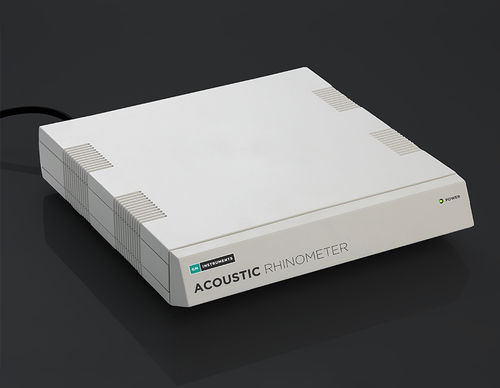
Acoustic rhinometry system A1

Add to favorites
Compare this product
Characteristics
- Type of rhinometry
- acoustic rhinometry
Description
Acoustic Rhinometers allow a very rapid non invasive examination of the nasal cavity using a sound pulse technique. Acoustic Rhinometry was developed originally during a joint collaborative project between the Universities of Aarhus (Denmark) and Boston (USA).
GM Instruments was invited to commercialise the system, and has been actively working with interested parties to update and improve the measurement since then. A Rhinometer quantifies nasal structure and measures this in terms of absolute levels and the effect of interventions, thus allowing % change to be recorded.
Supplied with Adult sound tube and options for Animal or Paediatric alternative sound tubes
PC Based with either a Clinical or Clinical/Research version
Pre/Post challenge or operative comparisons
Interfaced through a USB PC connection
Software available for up to and including Windows 10
Supplied with anatomical and conical nose piece starter packs for airtight connection without distortion
An Acoustic Rhinometer produces a high intensity, very short duration sound pulse in the sound tube and this is applied to one side of the nose. Whenever this pulse meets a change in cross sectional area, a reflection is produced, which returns to the sound tube and is picked up by a microphone. The outgoing and returning signals are processed by a PC to provide a plot of cross sectional area, as a function of distance, into the nose. Numerical information such as the area at certain distances into the nose, and volumes between certain points in the nose, are calculated and presented, which highlight and quantify the points of obstruction.
VIDEO
Catalogs
*Prices are pre-tax. They exclude delivery charges and customs duties and do not include additional charges for installation or activation options. Prices are indicative only and may vary by country, with changes to the cost of raw materials and exchange rates.











